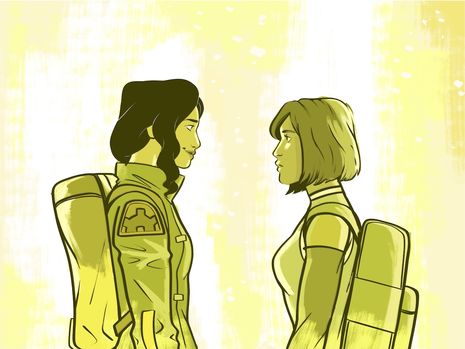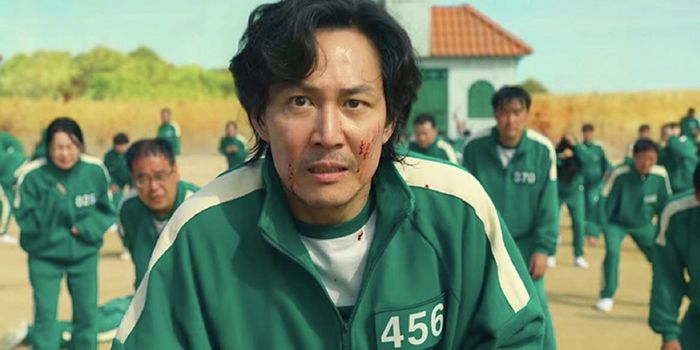Queer Cartoons Made Progress, But We Can’t Stop Here
Ellie Etches argues that while figures show LGBT+ cartoon representation is on an uptick, the numbers reveal nothing about the quality of that representation, nor poor industry hiring practices behind it. There’s still a long way to go

The pitch that became this article was slightly different to the final product. Initially, I planned something similar to so many fluff pieces praising the trailblazing work of the cartoon medium in normalising LGBT+ characters in children’s media. I was part of the Legend of Korra generation, and like many animation fans, I experienced the seismic shift in onscreen representation during the mid-2010s as it happened. But now (if you’ll forgive the crystal gem pun) it’s high time fans woke up and took off the rose-quartz tinted glasses. Let’s take a look at where we’re really at.
The 2014 Legend of Korra finale let its two heroines walk off into the sunset holding hands. It’s funny now to think that five seconds of eye contact between two female characters ever felt revolutionary. Troubling that this is the best the creators could do with the short rein Nickelodeon gave them. This is the same Nickelodeon that, obviously scrabbling around for more queer characters to add to their 2020 Pride post, decided to claim Spongebob Squarepants for the LGBT+ community – but I digress. The point is, in 2014 it would have been hard to imagine that we’d ever get recognition of a character’s sexuality as definitive as an onscreen kiss. Then, in 2018, as Pendleton Ward brought his 10-season behemoth Adventure Time to a close, a love confession between Marceline and Princess Bubblegum gave us just that. In the same year, Ruby and Sapphire married in the first LGBT+ wedding in a kids TV show. Characters became not just implicitly queer, to be confirmed by showrunners in interviews or in spin-off material, but explicitly, irrefutably queer. There’s a world of difference.
"There were a whopping 48 shows starring characters with confirmed ‘LGBTQ status’ during the 2010s"
This distinction is crucial because statistics only tell half a story. According to data collected by Insider, there were a whopping 48 shows starring characters with confirmed ‘LGBTQ status’ during the 2010s. But the figure drops once you remove side characters, and drops again when you discount characters whose identities were only hinted about or confirmed off-air. And even when you’ve done all of this, there’s no way to separate the wheat from the chaff – positive representation from negative stereotypes. A closer look reveals that behind the veneer of Western animation’s pastel-pop, CalArts pastiche, there’s stagnation. Insider’s database tracked all confirmed LGBTQ cartoon characters through all time, and out of their total 259, just 70 were identified as people of colour, only ten of which had leading roles. Parvesh Cheena, a gay Punjabi voice actor, linked these disparate figures to tokenistic inclusion: “White people were allowed to be gay, in a sense, or be queer as an identifier. People see our colour and ethnicity first before our sexuality.”
"Mistakes will be repeated until we stop lifting the same people onto a pedestal"
It’s no wonder that cartoons have historically centralised whiteness in their LGBT+ representation. So many of the big names in the Queer Cartoon Canon – Noelle Stevenson, Rebecca Sugar, newcomer Dana Terrace – are white, and in a notoriously toxic, nepotistic animation industry this dynamic is proving slow to change.
In the midst of this, there are still landmarks to celebrate. In January 2020, Kipo and the Age of Wonderbeasts featured the first Black protagonist (only the second protagonist ever) to refer to themselves as gay out loud. Critics consider Craig of the Creek to be one of the most groundbreakingly inclusive kids’ shows on television. While the show’s creators are white, the positive representation of the Black nuclear family at its heart is the result of the efforts by the Black writers, artists and actors in its creative team.
If companies and consumers really care about diversity in animated media they need to realise that white queer showrunners and characters are not the be-all and end-all. The shows that broke ground half a decade ago were the first steps that can be celebrated as such; they are not the final destination and they should certainly not be held above scrutiny. Mistakes will be repeated until we stop lifting the same people onto a pedestal.
 News / CUP announces funding scheme for under-represented academics19 December 2025
News / CUP announces funding scheme for under-represented academics19 December 2025 News / Cambridge welcomes UK rejoining the Erasmus scheme20 December 2025
News / Cambridge welcomes UK rejoining the Erasmus scheme20 December 2025 News / SU reluctantly registers controversial women’s soc18 December 2025
News / SU reluctantly registers controversial women’s soc18 December 2025 Film & TV / Timothée Chalamet and the era-fication of film marketing21 December 2025
Film & TV / Timothée Chalamet and the era-fication of film marketing21 December 2025 News / News in Brief: humanoid chatbots, holiday specials, and harmonious scholarships21 December 2025
News / News in Brief: humanoid chatbots, holiday specials, and harmonious scholarships21 December 2025









